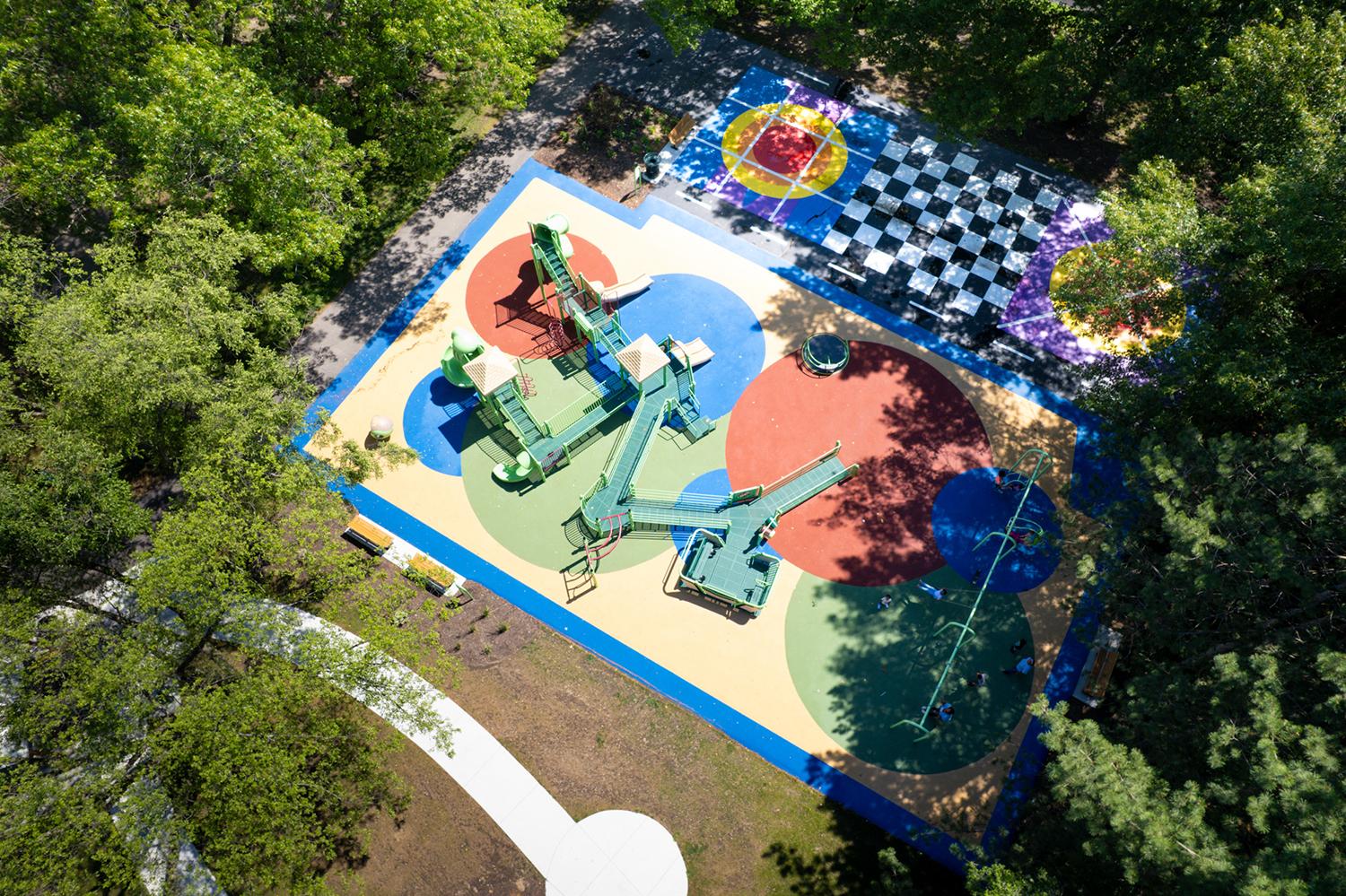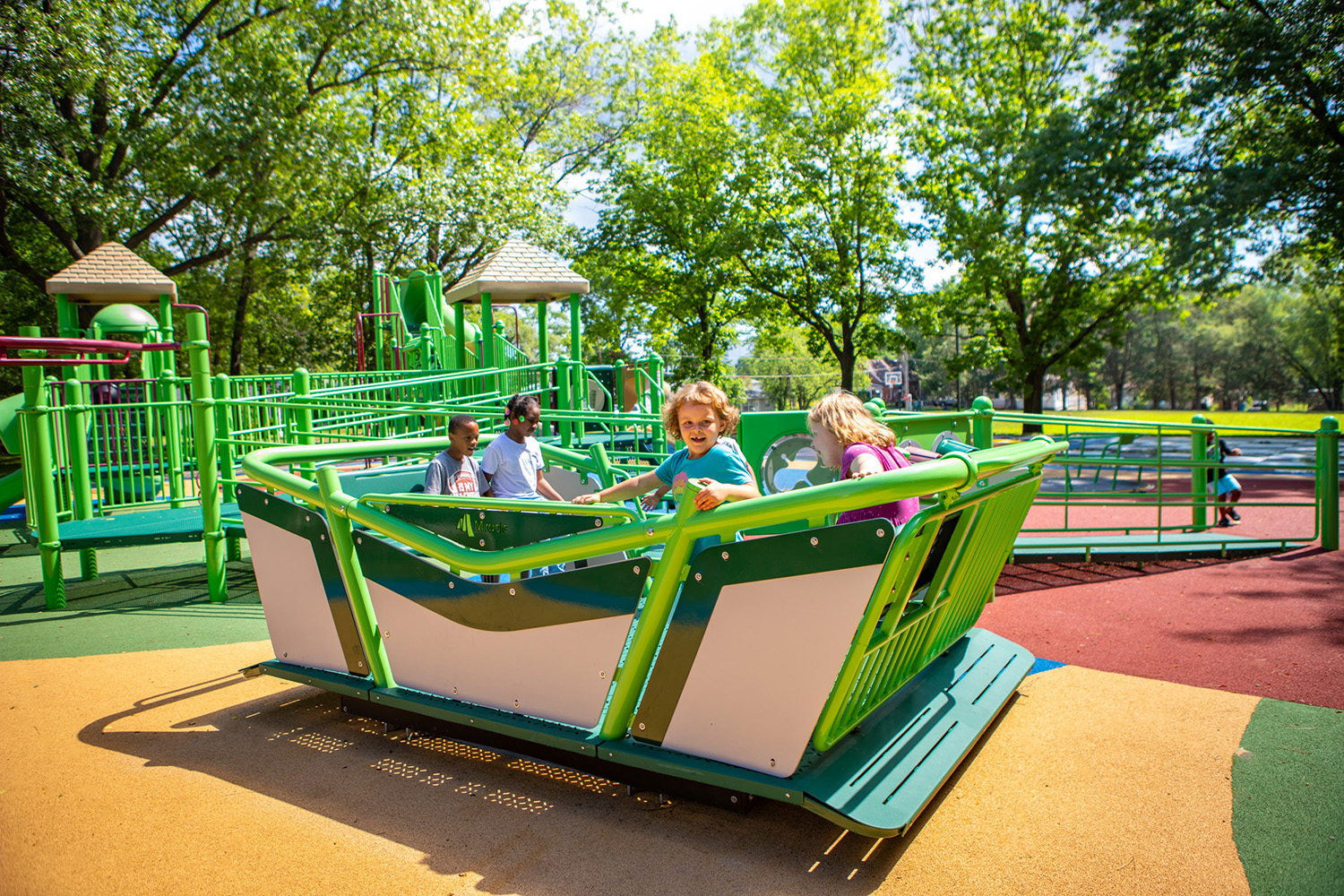Tucked within a dense residential district of Michigan City, Indiana, Water Tower Park has long been a community fixture — a small but beloved neighborhood green space where generations once gathered for pick-up games, summer play, and casual connections. Over time, however, the park’s amenities had aged beyond use. Cracked tennis courts, outdated play equipment, and limited accessibility left it underutilized and disconnected from the daily life of its neighbors.
Today, Water Tower Park stands as a model of what can happen when thoughtful design, equity, and community collaboration converge. The recent redesign, led by JPR, transformed this once-forgotten corner into an inclusive and vibrant public hub that celebrates both play and connection.
“We began with a simple question: how can this park better serve everyone?”
- JPR Design Team

Driven by a commitment to social equity and health-focused design, JPR started the process by listening. Through community meetings with local educators, disability advocates, and neighborhood residents, the team gathered input that shaped every major decision — from equipment selection and surfacing materials to circulation patterns and shade placement. These conversations became the foundation of a park that now feels safe, intuitive, and welcoming for users of all ages and abilities.
At the heart of the redesign lies an inclusive playground grounded in universal design principles. The former playground was relocated to a more visible, central area and retrofitted to improve safety and accessibility. Its new layout features ramps and tactile panels, along with a dual-person slide, cozy cocoon, zipline, and sensory-rich components such as a wheelchair-accessible glider and merry-go-round. These features were carefully selected to foster shared play experiences and ensure people of all abilities can play side by side — a tangible reflection of the project’s core belief that design should bring people together, not separate them.

Working within a modest construction budget, JPR turned constraint into creativity. Rather than removing the deteriorated tennis courts, the team repurposed the existing asphalt as the foundation for new poured-in-place playground surfacing. This adaptive approach reduced demolition waste, saved costs, and honored the site’s recreational history. The remaining court space was transformed into vibrant blacktop game zones and a canvas for community-created murals — a celebration of local artistry that weaves play, color, and memory into the park’s daily experience
Elsewhere, strategic reorganization of amenities enhances safety, comfort, and connectivity. The full-size basketball court was relocated to a more active, open area to promote passive surveillance and positive social use. Expanded ADA-compliant pathways link all corners of the site, creating an intuitive network that supports mobility for wheelchairs, strollers, and pedestrians alike. Additionally, a compact off-street parking lot improves accessibility without compromising the park’s neighborhood scale.

Throughout design and construction, JPR made deliberate choices to respect and preserve the park’s natural environment. Of the 84 mature trees on site, only one was removed, while new shade plantings were added to strengthen the site’s overall tree canopy. Grading and drainage solutions were refined to protect root zones and reduce maintenance needs, ensuring long-term resilience. These ecologically sensitive decisions, coupled with durable materials and passive programming, allow the park to grow and adapt alongside the community.
“Every design decision reflected a balance of inclusivity, sustainability, and community pride.”
– Austin Blomeke, PLA
Water Tower Park’s renewal demonstrates how small neighborhood parks can act as catalysts for community health, equity, and pride. By integrating inclusive play, public art, and ecological care, the design team created a space that supports both physical well-being and social connection. The park now serves as a daily destination for families, youth, and seniors — a place where neighbors connect, children play side by side, and the simple act of being outdoors feels accessible to all.

Through collaborative design and adaptive reuse, Water Tower Park redefines what’s possible within the constraints of a limited budget and compact footprint. It is a testament to the power of listening — to residents, to the environment, and to the quiet stories embedded in place. Today, the park stands as a living example of inclusive urban design and community-driven creativity — proof that great public spaces don’t have to be grand to make a lasting impact. They simply need to reflect the people they serve.